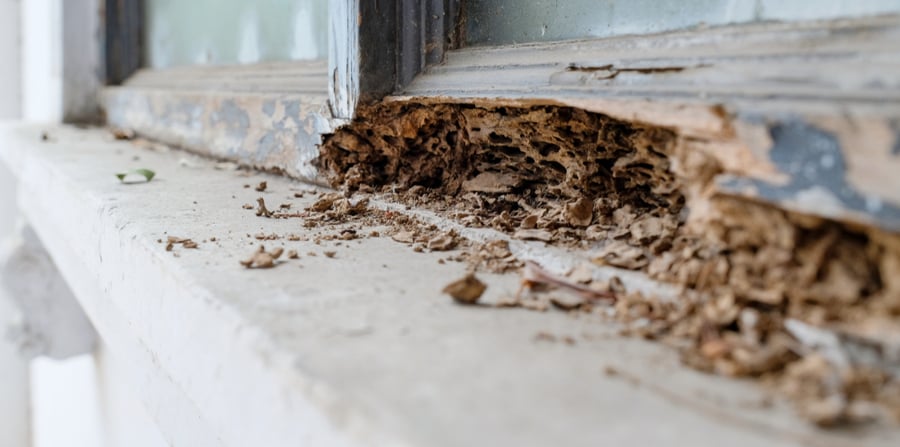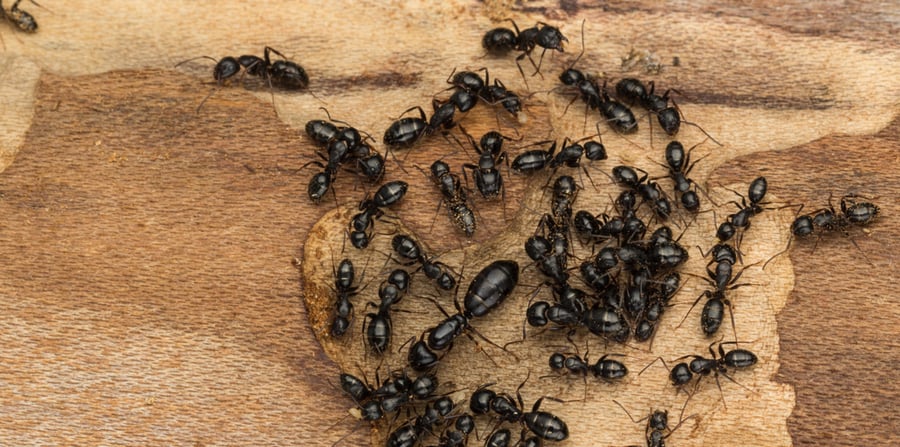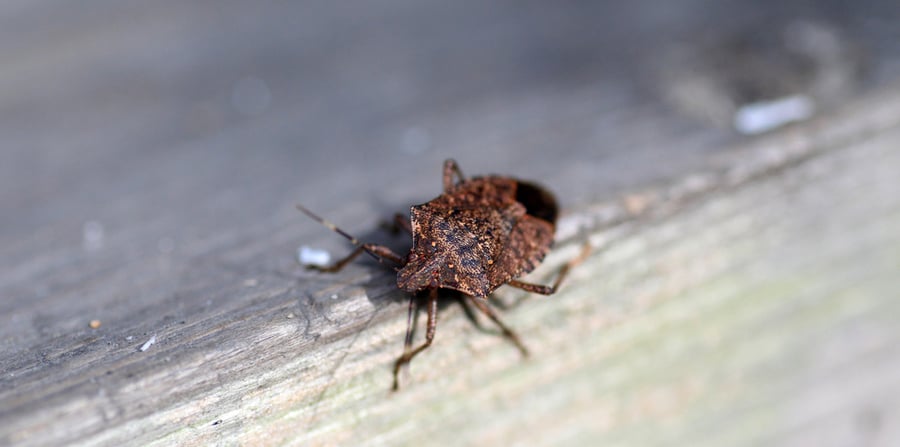Termite swarmers discard their wings when they build a colony. As their colony grows, termites build mud tubes to their food sources. Early termite feeding damage often resembles water damage. As termites eat, they produce droppings called “frass.” If you think you have termites, look for discarded wings, mud tubes, warped wood, and frass.
Termites eat wood from the inside-out, so the damage they inflict can be frustratingly difficult to notice… until it’s really not. Fortunately, termites do leave behind a few telltales signs of infestation even early on. The key to preventing significant termite damage is identifying these signs early on and doing something about them. Here’s how you can tell if you have a termite infestation and why the infestation happened in the first place:
How can I tell if I have termites?
If you’re worried you have termites, these five early infestation warning signs are what you should look for. Start outside around your building’s foundation and work your way in, looking for:
Blistering Wood or Paint
Termites naturally create concentrations of moisture in the areas of their wood tunnels where they nest and rest. Termites also secrete moisture while eating, and create hollow openings that moisture naturally tends to fill in. For all of these reasons, termite damage often resembles water damage, especially in relatively early stages. Look for “Blistering” wood damage or bubbling, peeling paint. Warped, bending wood may be a sign of water damage… or a sign of termites!
Mud Tubes
The most common termite species build “mud tubes” between their colonies and food sources. You can usually find these mud tubes near a building’s foundation reaching from the ground up to wood. They look like narrow “veins” or pathways of mud that follow irregular patterns. Mud tubes are made out dirt, termite spit, and sometimes droppings. They may look dirty or wet. If you have mud tubes around the outside of your building, you almost certainly have a termite infestation.
Discarded Wings
During spring, reproductive “swarming” termites grow wings and emerge from colony nests to seek out mates. After mating, swarmers use their wings to seek out ideal places to start new colonies. When they find a good enough place, the newly-fertilized swarmers will actually permanently shed their wings. Finding discarded wings near vulnerable wood such as door and window frames is an early sign of termite infestation.
Warped Frames
Termite infestations often start around door and window frames, because that wood is naturally exposed and accessible. When termites eat through frames they often warp or damage its wood in a manner similar to water damage. This warping can even make the door or window harder to open or close properly. Check your frames for signs of warping, bending, cracking, or blistering. If you have frame damage, you may have located an early termite infestation.
Frass (droppings)
As drywood termites eat through wood, they produce pellet-like, wood-colored droppings called “frass.” Frass is a dry, somewhat powdery substance. To keep frass from building up in their tunnels, termites push it out of small holes near their nests. You may find frass buildup outside, near the foundation, in your basement, or near window or door frames. Frass sometimes leaves behind dark stains or black marks.
How did I get termites?
The most common termite in North America is the Eastern subterranean termite (Reticulitermes flavipes). Eastern subterranean termites (and other subterranean termites) require a constant source of moisture while they work their way through wood. They’re attracted to moist wood or humid environments because if they can stay hydrated, they can remain active constantly. If you have termites, it’s probably because some of the wood around your building is often wet. Plumbing leaks, condensation from humidity, or excessive runoff can all make your wood vulnerable to termites.
Eastern subterranean termites don’t like exposing themselves to the surface for any longer than absolutely necessary. They build mud tubes between their nests and their food sources to remain covered and hydrated as they move. The closer exposed, untreated, vulnerable wood is to their nesting sites, the more appealing it is. Termites attack untreated wood that contacts the ground directly, especially if it retains moisture. Termite infestations frequently start in decks, porches, pillars, or frames.
The right time to do something about a termite infestation is the moment you notice it. The damage termites inflict is permanent. There’s no way to “fix” hollowed-out wood except to replace it. The sooner you do something about termites, the less damage they’ll inflict, and the less you’ll have to replace. We can help with that.
If you’re worried you have a termite infestation, get in touch with Plunkett’s Pest Control right away. Our experts use the Sentricon System to effectively and permanently eliminate entire termite colonies very quickly. If you need a termite solution that’s fast, effective, and lasting, Plunkett’s is the place to contact. We can stop the damage right now.









